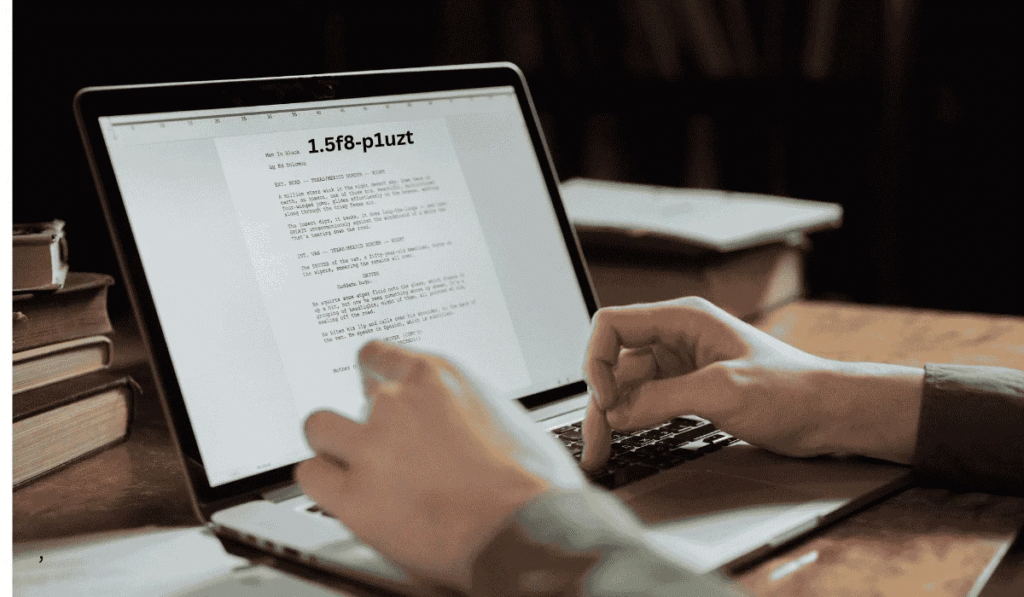Defining the 1.5f8-p1uzt Texture: Characteristics and Composition
The 1.5f8-p1uzt texture represents a unique and intricate material characterized by its specific molecular structure and distinctive physical attributes. At the core of its definition lies a unique arrangement of atoms that contributes to its exceptional characteristics. This texture’s molecular architecture allows for remarkable durability, making it particularly suitable for various applications across different industries.
One of the key physical properties of the 1.5f8-p1uzt texture is its resistance to wear and tear. The carefully organized molecular structure not only grants it strength but also enhances its ability to withstand environmental stressors. This resilience has led to its utilization in products that demand longevity and reliability. Furthermore, the texture showcases an appealing visual aesthetic, often characterized by a smooth or slightly textured surface that can be adjusted to meet specific design requirements.
In terms of functionality, the 1.5f8-p1uzt texture is versatile, merging practicality with aesthetic appeal. It exhibits excellent thermal stability, allowing it to perform reliably in varying temperature conditions. This characteristic is key in industrial applications where temperature fluctuations can affect the integrity of materials. Additionally, its lightweight composition does not compromise its strength, further enhancing its usability in diverse sectors, from manufacturing to consumer goods.
The composition of the 1.5f8-p1uzt texture is also worth noting. It is made up of a mix of highly engineered polymers and additives that optimize its performance and adaptability. Each component plays a crucial role in determining the overall profile of the material, contributing to its unique texture, enhanced durability, and functional capabilities. By understanding these elements, one can appreciate the significance of the 1.5f8-p1uzt texture in contemporary material science and its potential for future innovations.
The Science Behind 1.5f8-p1uzt Texture: How It’s Formed

The formation of the 1.5f8-p1uzt texture is a complex interplay of various scientific processes involving chemical reactions, environmental conditions, and advanced technological methods. Initially, the process begins at a molecular level, where specific materials undergo crucial chemical transformations that result in distinct structural formations. These reactions are primarily contingent upon the types of materials used, the temperature, and the pressure conditions present during the interaction.
A critical phase in forming the 1.5f8-p1uzt texture is the thermal treatment of precursor materials, which leads to phase changes that facilitate the emergence of unique characteristics. The introduction of heat not only drives chemical reactions but also influences the morphology of the formed structure. During this phase, factors such as the rate of heat application and cooling play an essential role in determining the ultimate properties of the texture. For instance, rapid cooling might trap specific configurations, stabilizing the formation of the desired 1.5f8-p1uzt texture.
In addition, the surrounding environment significantly impacts the integrity of the 1.5f8-p1uzt texture. Variables such as humidity, atmospheric pressure, and even contamination from other compounds can alter the consistency and quality of the final product. Moreover, the technological processes employed during the synthesis stage, including the use of high-precision instruments and controlled environments, enhance the reproducibility and reliability of the texture’s characteristics.
Ultimately, understanding the formation mechanisms behind the 1.5f8-p1uzt texture allows researchers and industrial practitioners to manipulate conditions to achieve desired properties. By mastering these scientific principles, it becomes possible to not only create various adaptations of the texture but also maintain the quality and consistency necessary for its diverse applications.
Applications of 1.5f8-p1uzt Texture: Where Is It Used?
The 1.5f8-p1uzt texture has emerged as a significant material in various industries due to its unique properties that enhance performance and user experience. One of the most notable applications is in the manufacturing sector, where the texture’s strength and durability make it ideal for creating robust products. For instance, automotive manufacturers have begun to integrate 1.5f8-p1uzt into parts that are subject to high levels of stress and wear, ensuring longevity and reliability.
In the field of design, the versatility of the 1.5f8-p1uzt texture offers exceptional aesthetic appeal paired with functional benefits. Designers utilize this texture in a range of products, from electronics to home furnishings. Its tactile qualities not only improve grip and usability but also contribute to the overall visual design, leaving a lasting impression on consumers. For example, electronic devices featuring the 1.5f8-p1uzt texture have reported increased user satisfaction due to their enhanced ergonomics and aesthetic appeal.
Moreover, technology sectors have begun to harness the capabilities of the 1.5f8-p1uzt texture in the development of advanced materials. Research has demonstrated that when used in conjunction with smart technology, the unique properties of this texture can lead to innovative applications including touch-sensitive surfaces and responsive textures that adapt to various environmental conditions. Recent projects have showcased how companies have successfully implemented the 1.5f8-p1uzt texture in their products, leading to enhanced performance and user interaction.
Overall, the wide-ranging applications of the 1.5f8-p1uzt texture across manufacturing, design, and technology sectors illustrate its versatility and effectiveness, proving that its unique properties can meet the diverse demands of modern industries.
Future Trends and Innovations Relating to 1.5f8-p1uzt Texture
As material science continues to advance, the significance of the 1.5f8-p1uzt texture becomes increasingly apparent in a variety of fields. Recent research has identified novel characteristics within this texture that open up new avenues for application. For instance, the development of more efficient manufacturing processes utilizing 1.5f8-p1uzt texture could lead to products that offer enhanced durability and performance. The integration of this texture into smart materials is another area of exploration. These materials could readjust their properties in real-time depending on environmental conditions, showing great promise in sectors such as aerospace, automotive, and consumer electronics.
Future innovations may also focus on biocompatibility and environmental sustainability related to the 1.5f8-p1uzt texture. With growing concerns around the ecological impact of materials, researchers are investigating how to utilize this texture in biodegradable products or those that can be easily recycled without compromising their structural integrity. This would ensure that the application of 1.5f8-p1uzt texture aligns with sustainability goals while meeting the demands of modern engineering.
Furthermore, advancements in additive manufacturing techniques could revolutionize how the 1.5f8-p1uzt texture is produced and employed. With 3D printing technologies becoming more sophisticated, there is potential for on-demand production of components that utilize this unique texture, allowing for customization at levels previously unattainable. The adaptability of these manufacturing methods could lead to rapid prototyping of products that leverage both the physical properties and aesthetic benefits of 1.5f8-p1uzt texture.
Ongoing collaborations across industries, research institutions, and startups are crucial for exploring the full potential of this material. As experimentation with the 1.5f8-p1uzt texture continues, stakeholders can anticipate innovations that not only redefine existing applications but also create entirely new markets and functionalities. The future looks promising for the exploration and implementation of the 1.5f8-p1uzt texture across diverse sectors.


